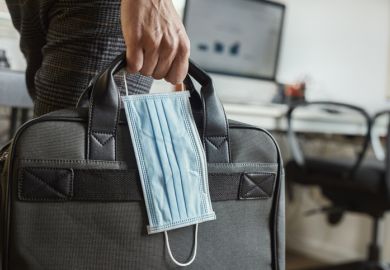As we begin to rein in Covid-19, universities will face an economic recession unlike any since the Great Depression.
Early signs indicate that socio-economic groups, institutions and even countries will follow starkly divergent paths. Over time, these paths will come to resemble the two arms of the letter K. In higher education, just as in every other sector, leaders and administrators are scrambling to ensure that their institution is on the upward trajectory.
Based on our extensive research into effective strategic management and innovative business models, we believe two themes will dominate: understanding competitive pressures, and addressing students’ rapidly shifting behaviours. Both will be crucial in steering a college or university through this treacherous phase.
First of all, strategy quite simply matters more during a recession. Some organisations emerge stronger, others muddle through, and many don’t make it. Our research indicates that the decisions made during the downturn have the biggest impact on the long-term competitive health of an organisation. Higher education leaders, therefore, need to focus their attention on several dynamics.
Organisations that have a protected, tough-to-duplicate niche fare better. In the Boston area, for instance, a comparatively small, STEM-focused school such as Worcester Polytechnic Institution is likely to emerge stronger from the recession by continuing to build its core competencies. All leaders need to ask themselves: what is our organisation’s crown jewels programme? Is it unique? If the answers to these questions are unclear, that is a major problem.
If organisations can leverage economies of scale, they will also fare better. This may apply particularly in smaller institutions, where every class has to be considered. How, given expenses relating to faculty, labs and mode of delivery can a favourable marginal cost structure be realised? By their very nature, for example, PhD programmes do not scale cost-effectively, thus representing an enormous opportunity cost as faculty are drawn away from large, profitable undergraduate and graduate classes. Unless supported by strong external funding, a doctoral programme is a luxury few institutions can afford.
We also found that organisations able to draw strength from a network of linked institutions increase their survival rates both during and after a recession. Take the example of the University of Texas at Austin, whose “tendrils” cut across most sectors in the region, thus making the institution irreplaceable. Is your institution part of a larger ecosystem? If not, make this a top priority.
For the past century, higher education has been a one-shot deal: get a degree, go to work, retire. Now, the average member of Gen Z is expected to reach their 100th birthday. They may well engage in four to five different careers or take on multiple vocations (or side hustles) at the same time. Throughout, they will need to access, at the very least, the key skills and capabilities they require. In some cases, their education will be much more extensive. Hence we are seeing the set menu rapidly being replaced by à la carte educational offerings.
In all but a small handful of cases, the traditional campus will cease to be the central hub for education. Instead, learners will increasingly rely on an expansive network of providers able to serve up offerings tailored to their specific needs. Accordingly, the value of homegrown learning content is quickly eroding, as institutions are becoming platforms that can curate, facilitate and integrate the learning of others. They will therefore have to decide when to use their own brand and when to find ways of monetising someone else’s through sharing revenue or reciprocal agreements.
The emergent business model in higher education is for institutions to become data-driven solutions providers for students, employees (prospective and incumbent) and employers. Successful scaling of this model will depend on building a lifelong relationship with learners, using data analytics to track progress and to offer additional education, reskilling and upskilling products when needed.
The oft-quoted 21/90 rule suggests that it takes people 21 days to create a habit and 90 days to make it part of their lifestyle. Behavioural changes during the year-long pandemic have given rise to entirely new habit loops, many of them driven by technology.
University leaders must embrace the central role of technology in meeting the needs of tomorrow’s learners. They may find inspiration in the way that Amazon chief executive Jeff Bezos has maintained a maniacal focus on the customer and, using technology, worked backwards to deliver on the value proposition.
The number-one strategic mistake that leaders make in navigating disruptive environments is working on the assumption that the new landscape will resemble the old. Yet nothing could be further from truth. Our civilisation is at a tipping point. We saw this in the way that, although much of academia resisted online education for decades, it took US universities just 10 days in March 2020, working through their cancelled spring breaks, to move to a virtual environment.
The consequences of this global shock are here to stay. While the educational optimists are holding out for a return to normality, we would ask them just one question: if the future doesn’t look like the past, on which fork of the K will you find yourself?
Michael Braun is professor of management and Knick Family Fellow at the University of Montana. Scott Latham is associate professor of management and former dean at the Manning School of Business, University of Massachusetts Lowell.
Register to continue
Why register?
- Registration is free and only takes a moment
- Once registered, you can read 3 articles a month
- Sign up for our newsletter
Subscribe
Or subscribe for unlimited access to:
- Unlimited access to news, views, insights & reviews
- Digital editions
- Digital access to THE’s university and college rankings analysis
Already registered or a current subscriber?









